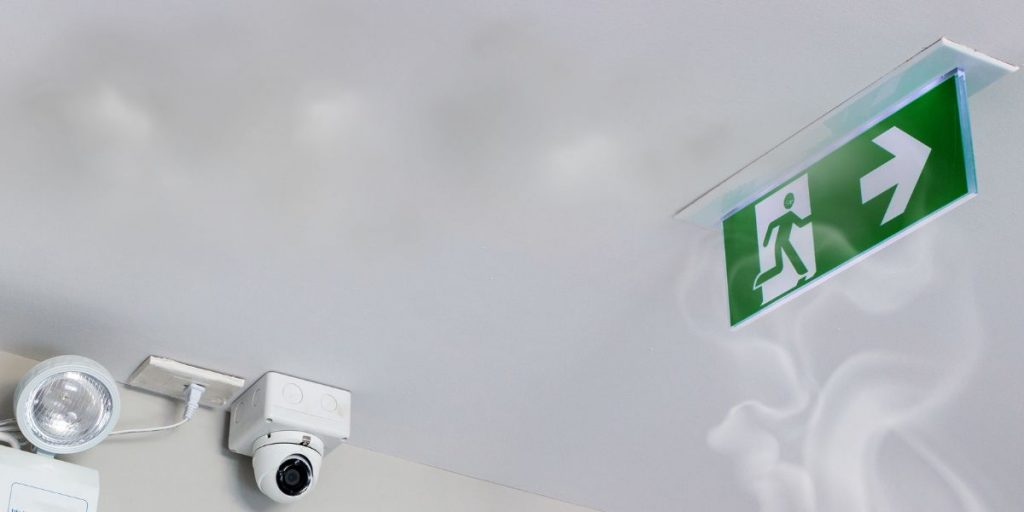When deciding on emergency lighting, you’ve got two main types to contemplate: central battery systems and self-contained units. Central battery systems are efficient, using fire-resistant cables and centralized control to guarantee reliable illumination. They’re ideal for larger spaces needing consistent, easily maintained lighting. On the other hand, self-contained units are perfect for smaller areas; they’re compact, easy to install, and blend well with decour while minimizing maintenance costs. Additionally, think about whether you need maintained operation lights, which stay lit continuously, or non-maintained lights that activate only during a power outage. By exploring further, you’ll discover more about optimizing these systems for your specific needs.
Key Takeaways
- Consider central battery systems for efficient power distribution and easier maintenance.
- Explore self-contained units for compact and low-maintenance emergency lighting solutions.
- Choose maintained operation lights for constant illumination in areas requiring continuous safety.
- Opt for non-maintained lights in spaces not needing constant lighting to save on energy and maintenance costs.
- Assess the specific needs of your space to decide between various emergency lighting systems.
Understanding Battery Systems
Battery systems, important for emergency lighting, guarantee that lights stay on even when the main power fails. You’re relying on advanced battery technology that’s essential not only for safety but also for operational continuity during power outages.
This technology encompasses both the design and functionality of emergency lighting systems in various environments, ensuring they’re ready to function exactly when you need them.
Incorporating these systems into your building’s power distribution strategy is crucial. It allows for a smooth shift to emergency power, minimizing disruption and maximizing safety. Energy efficiency also plays a key role here. Modern battery solutions are designed to be more energy-efficient, reducing the overall energy consumption of a building and helping to lower operational costs.
Furthermore, the approach to lighting design in emergency systems is tailored to meet specific standards that guarantee adequate illumination during crises. This isn’t just about providing light; it’s about ensuring that the lighting is directed and powerful enough to guide evacuations and enable swift emergency responses.
Effective emergency lighting supported by robust battery systems thus becomes a cornerstone of a well-prepared safety protocol, ensuring that all areas are adequately illuminated during power failures.
Central Battery Features
Exploring central battery features, you’ll find that this system distributes power efficiently to emergency lights throughout larger buildings, using fire-resistant cables. One of the central battery advantages is its robust power distribution capabilities. Unlike individual battery systems in each fixture, the central battery consolidates energy resources, ensuring a streamlined and reliable power supply during emergencies.
This system’s use of fire-resistant cables greatly enhances safety. These cables are designed to withstand extreme conditions, preventing the spread of fire and ensuring that the pathway for electricity remains intact even in adverse situations. Such durability is vital in high-risk environments like factories and large office complexes.
Moreover, the central battery system facilitates centralized battery charging. This means you don’t have to worry about checking and maintaining multiple units. Instead, a single maintenance check on the central battery can ensure all connected emergency light fixtures are operational and fully charged. This not only simplifies the maintenance process but also improves reliability and response time during power outages.
Centralized control also allows for easier upgrades and troubleshooting, providing a future-proof solution that can adapt to evolving safety standards and technological advancements. By integrating a central battery system, you’re investing in a dependable and efficient emergency lighting setup.
Self-Contained Units Explained
While central battery systems are suited for larger buildings, self-contained units offer a reliable and compact emergency lighting solution for smaller spaces. These units, with a battery inside each emergency light fixture, are ideal when you’re looking to streamline installation and maintain autonomy in your lighting solutions.
First off, installation tips for these units include ensuring that each light is positioned to provide the best coverage and illumination for emergency exits and paths. Since each unit operates independently, you don’t need extensive wiring or a centralized control system, making the setup straightforward.
Design options for self-contained units are plentiful, allowing you to choose fixtures that blend seamlessly with your space’s aesthetics without compromising on safety. Whether you prefer sleek, modern designs or something more robust, there’s a style to meet your needs.
Energy efficiency is another significant advantage. These units are designed to consume less power, aiding in reducing your overall energy costs. Plus, the battery lifespan in these systems is optimized for extended use, ensuring they remain operational for years with minimal maintenance.
Speaking of maintenance, the requirements are generally low; regular checks and timely battery replacements will keep them in good working order, ensuring safety during emergencies.
Maintained Operation Insights
Although maintained emergency lighting is continuously operational, it serves an essential role by ensuring constant illumination for safety in areas like stairwells and escape routes. You’ll find that the maintained operation benefits go beyond mere compliance with safety codes. This type of system guarantees that illumination is never compromised, important during unexpected emergencies.
Maintained lights operate using a central battery system or self-contained units in various buildings. This setup, especially with LED technology, enhances energy efficiency. LED lights consume less power and have a longer lifespan, greatly reducing maintenance costs and energy bills.
Furthermore, the constant illumination provided by maintained systems enhances emergency preparedness. It ensures that all escape routes and critical areas are perpetually lit, reducing confusion and panic during power outages. This is particularly crucial in larger complexes where immediate exit mightn’t be straightforward.
Incorporating advanced safety features, maintained emergency lighting systems are designed to be robust and reliable. They often include fire-resistant cables that connect to a central battery, ensuring that the lighting remains functional even under extreme conditions. These features collectively bolster the safety infrastructure of any establishment, making maintained emergency lighting a wise choice for thorough emergency response planning.
Benefits of Non-Maintained Lights
Non-maintained emergency lights activate only during power outages, offering important energy savings and reduced maintenance costs. As you explore options for emergency lighting, it’s essential to understand how these units can benefit your setup, especially in areas that don’t require continuous illumination.
Here are some key advantages of opting for non-maintained emergency lights:
- Energy Efficiency: Since these lights are off during normal conditions, they consume less power overall, leading to lower energy bills.
- Cost Savings: Lower energy consumption means not only reduced energy costs but also fewer expenses in long-term maintenance and bulb replacements.
- Extended Battery Life: The battery in non-maintained lights is used less frequently, which can significantly prolong its lifespan compared to maintained systems.
- Reliable Backup Power: In emergency situations, these lights provide dedicated, reliable backup lighting, ensuring that they’re fully charged and ready when needed.
- Targeted Emergency Use: Non-maintained lights activate specifically during power failures, which makes them ideal for spaces that require light only during emergencies, thus not wasting resources.
Investing in non-maintained emergency lights means you’re prepared for emergencies while maximizing energy efficiency and cost savings. This makes them an excellent choice for many commercial and industrial environments.
Need more help?
If you would like to find out more information about all of our Electrical services available, or have a question about your existing lighting system you can send us a message or
Give us a call today to find out more 0191 442 2723

